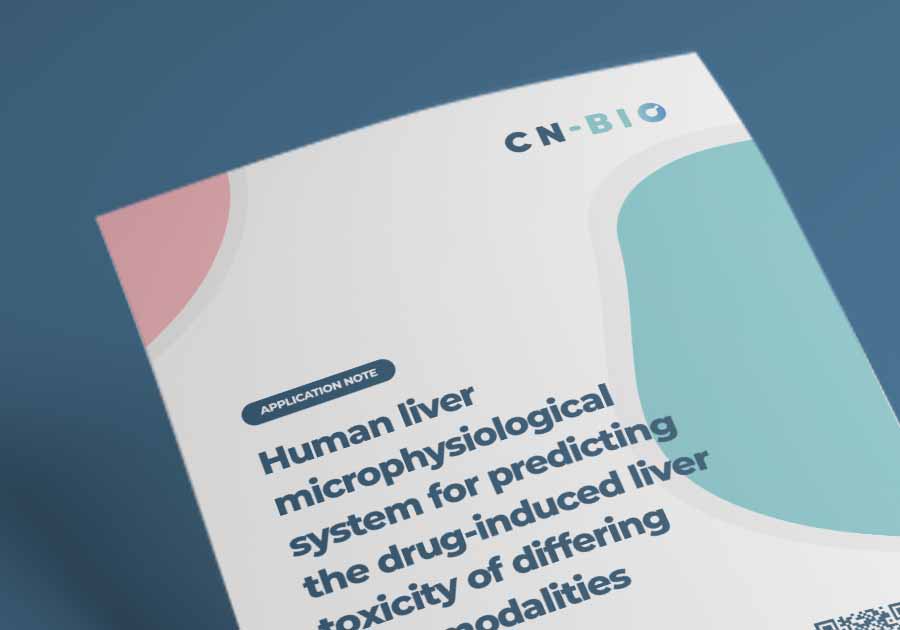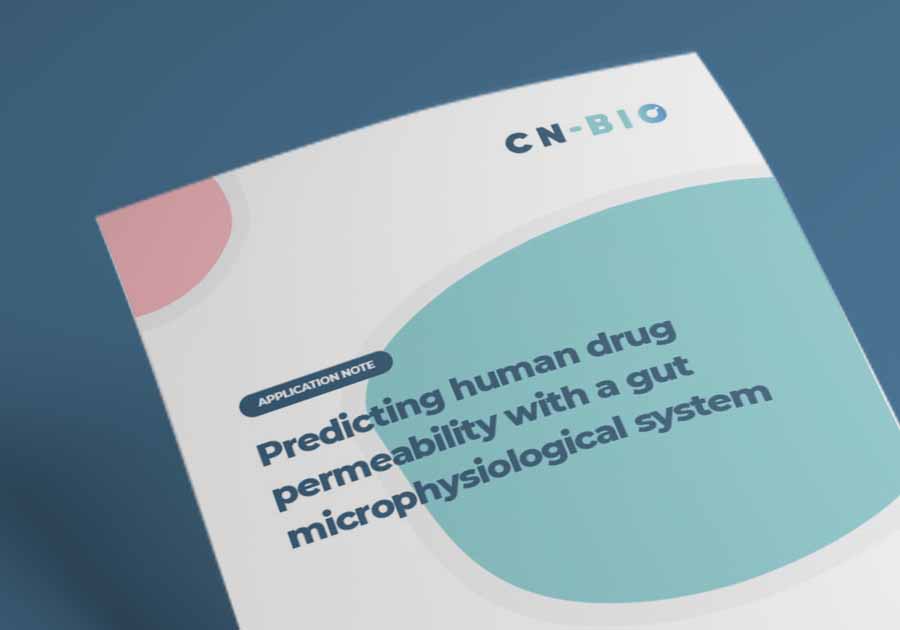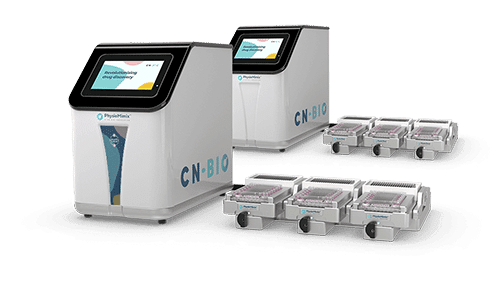Application notes

Connecting the gut and liver
A human relevant dual-organ microphysiological system for preclinical profiling of oral bioavailability
Efforts to improve the in vitro to in vivo translation of drug efficacy and safety data has led to the emergence of more human relevant microphysiological systems (MPS). Multiple, fluidically linked MPS can be linked to form multi-organ systems that simulate human processes which can be utilized to improve ADME and bioavailability estimations. ADME and bioavailability are central in determining the safety and toxicology profiles of compounds and are therefore crucial preclinical drug development measurements.
Application notes

Alveolar and Bronchial Microphysiological Systems for respiratory infection research and therapeutics evaluation
Richardson et al
Learn about respiratory diseases and their impact on global health, as well as the potential of CN Bio’s technology in developing new pulmonary therapeutics.
Application notes

Human liver microphysiological system for predicting the drug-induced liver toxicity of differing drug modalities
Novac et al
The liver is one of the organs most susceptible to drug toxicity and drug-induced liver injury (DILI). With more than 750 FDA-approved drugs known to have a degree of DILI risk, better preclinical models are required to de-risk new therapeutics earlier in the drug development process. We assess whether a Liver MPS model could be used to understand the detailed mechanistic aspects of liver toxicity.
Application notes

Microphysiological system for studying fatty liver disease and its impact on drug-induced liver injury
Kostrzewski et al
As a result of the increased prevalence of diabetes, obesity, and metabolic syndrome, non-alcoholic fatty liver disease (NAFLD) is now the most common chronic liver disease in developed countries. Using better in vitro models to fast-track therapeutic development but also accurately assess DILI risk in NASH patients ahead of the clinic is critical. Here, we show the potential of an in vitro 3D NASH model to accurately identify any DILI-associated risks.
Application notes

Improved prediction of oral bioavailability using a gut-liver microphysiological system
Abbas, Kostrzewski & Hughes
Central to the development of new drugs is an understanding of their pharmacokinetic properties, in particular their bioavailability. Here, we demonstrate the potential of a true 2-organ gut-liver MPS to better predict human bioavailability and improve in vitro to in vivo correlation.
Application notes

Drug metabolism in a gut-liver microphysiological system
Abbas, Kostrzewski & Hughes
Studies investigating the efficacy and safety of candidate drugs use a variety of animal models to translate research from the bench to clinical trials and then to the clinic. Here, we demonstrate the potential of multi-organ MPS models for improved predictions of in vivo drug absorption and hepatic clearance rates.
Application notes

Predicting human drug permeability with a gut microphysiological system
Bray et al
Preclinical drug absorption studies are a key step when developing when therapeutics as they determine how much of orally-administered drug reaches the systemic circulation. Here, we show how we developed and characterized a gut MPS closely aligned to the human small intestine, using the PhysioMimix® Single-Organ system, and demonstrated its utility to predict drug permeability.

